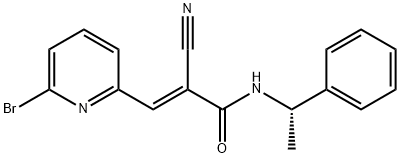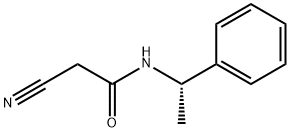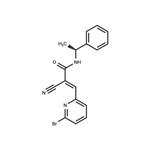Description
WP1066 is a cell-
permeable inhibitor of STAT3 that directs dephosphorylation and nuclear export of constitutively phosphorylated STAT3 in U87-
MG and U373-
MG malignant glioma cells when given at a concentration of 10 μM. It also induces apoptosis in U87-
MG (IC
50 = 5.6 μM) and U373-
MG (IC
50 = 3.7 μM) cells. WP1066 is orally bioavailable, crosses the blood-
brain barrier, and demonstrates
in vivo activity, including immune activation as indicated by the up-
regulation of CD80 and CD86 and the induction of proliferation of effector T cells. In addition to inducing apoptosis in cancer cells, WP1066 suppresses vascular smooth muscle cell proliferation after vascular injury in mice and prevents seizures following brain injury in rats.
References
1) Kong?et al.?(2005),?Discovery of WP1066, a novel Stat3/c-myc inhibitor with potent antitumor activity against human melanoma in vitro and in vivo;?Cancer Res.?65?1387
2) Iwamaru?et al.?(2007),?A novel inhibitor of the STAT3 pathway induces apoptosis in malignant glioma cells both invitro and in vivo;?Oncogene?26?2435
3) Ferraioli?et al.?(2007),?WP1066 Disrupts Janus Kinase-2 and Induces Caspase-Dependent Apoptosis in acute Myelogenous Leukemia Cells;?Cancer Res.?67?11291
4) Kong,?et al.?(2008),?A novel inhibitor of signal transducers and activators of transcription 3 activation is efficacious against established central nervous system melanoma and inhibits regulatory T cells;?Clin. Cancer Res.?14?5759
5) Kong,?et al.?(2009),?A novel phosphorylated STAT3 inhibitor enhances T cell cytotoxicity against melanoma through inhibition of regulatory T cells;?Cancer Immunol. Immunother.?58?1023
6) Ma,?et al.?(2017),?Stat3 inhibitor abrogates the expression of PD-1 ligands on Lymphoma cell lines;?J. Clin. Exp. Hematop.?57?21





